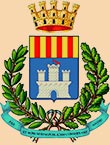Museo dell'intreccio mediterraneo di Castelsardo
Main site sections
Corbule, culture and legends
These are artifacts with a truncated conical shape, concave with high walls, which can be straight or curved. The base is usually narrow compared to the rim, raised by a foot made of one or two coils, or flat when the warp is of asphodel stems.
The size varies depending on the destined usage as, in the past, these baskets were used as the unit of measurement for wheat grain and its derivatives.
They are woven using the fixed stitch coiled structure technique using a punching tool made from metal or bone from the shank of an animal.
The coils are made of wheat culms, reed and asphodel stems, previously harvested, sorted, cleaned, dried and, just before use, rehydrated with water.
In some geographical areas of Sardinian corbule are characterized by decorations with colored fibers and tone-on-tone designs, obtained as a result of the coloration of the materials.
From the end of the 1950's corbule were an essential part of a woman's bridal trousseau, a set of containers that includes three baskets and three corbule. These, along with two further sets, made up of sieves and baskets, were indispensable for the preparation of wheat and flour.
The art of making corbule in the Sardinian culture is linked to some curious anecdotes that actually happened:
- The phenomenon known as “basket children” dates from the end of the 1800's and the beginning of the 1900's in Cagliari. These children were often orphans and were abandoned to themselves on the streets of the city. They roamed barefoot, poorly dressed and starving, in the alleys around the port, the station and the marketplace carrying a large basket in the hope that some bourgeois lady would give them humble porterage chores in exchange for a few coins.
The life of Suor Giuseppina Nicoli (1863-1924), beatified in Cagliari on the 4 February 2008, was linked to these children as she dedicated herself to their care, instruction and education.
- In some centers of Sardinia, up until the '60's and '70's, wedding gifts were brought directly to the bride and bridegrooms home in corbule, to symbolize abundance and bring good fortune to the couple. And it also had a curious role during mourning, when the family of the deceased was offered food for the midday or evening meal in a corbule. This was immediately turned upside down after its use and, eight days after its receipt, was returned to the family who had made the donation.


